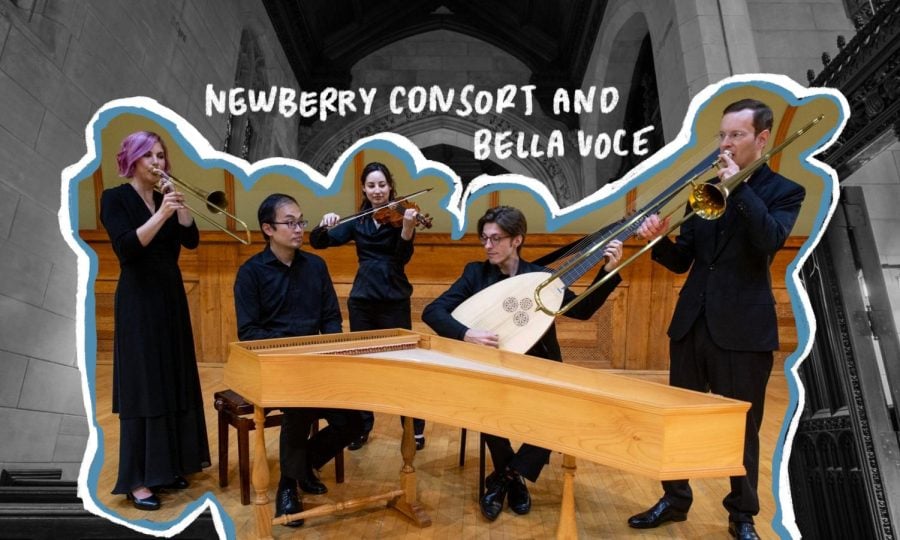Bella Voce, Newberry Consort collaboration transports listeners to 17th-century Europe
Illustration by Beatrice Villaflor
Members of the Newberry Consort performed alongside members of Bella Voce at St. Luke’s Episcopal Church on Sunday.
May 15, 2023
Bella Voce and the Newberry Consort brought concertgoers to 17th-century Germany through their Sunday performance of Michael Praetorius’ “Polyhymnia Caduceatrix et Panegyrica” at St. Luke’s Episcopal Church in Evanston.
“Performing music like this is kind of an act of time travel, especially when one of your goals is to perform it in a way that they would have done 400 years ago,” said Bella Voce Artistic Director Andrew Lewis.
The Praetorius piece is part of the first collaboration between the two early music ensembles. “Singen und Sagen: Music for Hope in a Time of War” included more than 30 vocal and instrumental performers.
Musical portions of the German composition — published during the Thirty Years’ War, which started in 1618 and devastated Europe — were interspersed with readings of historical accounts from people who lived during the war.
Published during wartime, the piece could not be performed in its full scale until years later, according to Newberry Consort Artistic Director Liza Malamut.
“It’s really incredible that this music has survived hundreds of years,” Malamut said. “It was 30 years of awfulness, but it ended, and the music is what survived.”
All performers on Sunday played on period instruments from the Baroque era or on replicas. The concert featured the bass violin, trumpet, theorbo, trombone, cornett and dulcian.
Fifth-year Ph.D. music theory and cognition candidate Lena Console, a trumpet player, said using a 17th-century instrument helps bring the piece’s history to life.
“I love playing the repertoire written centuries ago for this type of instrument on the instrument itself, or a replica of the instrument,” Console said. “It just feels a lot more connected to what it might have sounded like back in the day, and what it might have felt like to play it.”
Console said she had never played alongside more than two trumpet players before — but she performed with four in this concert.
She said the trumpeters’ part during the last portion of the performance added to its joyful tone.
“To hear five trumpets playing a fanfare in a church with these very resonant acoustics, it’s just a really exciting experience,” Console said. “It adds so much sound and vibration in the room that you feel it — it’s not just hearing it. You really feel the presence of the whole group in a different way.”
In addition to the brass and woodwind instruments, the performance featured a consort of strings.
Playing alongside other early instruments creates a unique atmosphere, said Craig Trompeter, a bass violinist in Sunday’s performance.
“It’s exciting to be doing something this grand — to bring all these different specialties together, all these voices and so many different instruments,” Trompeter said.
Above all, Malamut said she hopes audience members walk away with a message about how art survives during challenging times.
In addition to the sonic experience, she said the performance conveys a feeling of hope.
“There are dark times in history, and humans are capable of these really terrible things,” Malamut said. “We’re also capable of really beautiful things when we create this art and music that outlasts all these dark times.”
Email: [email protected]
Related Stories:
— Northwestern alumnus directs Bach Week Festival
— World-famous lute player to perform at Northwestern recital hall in classical concert


